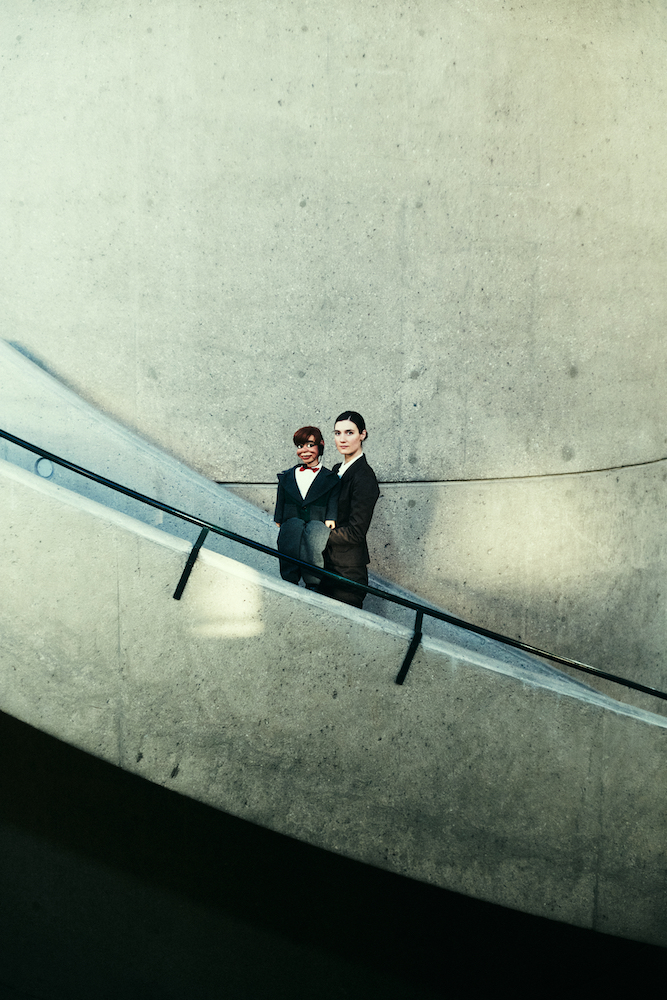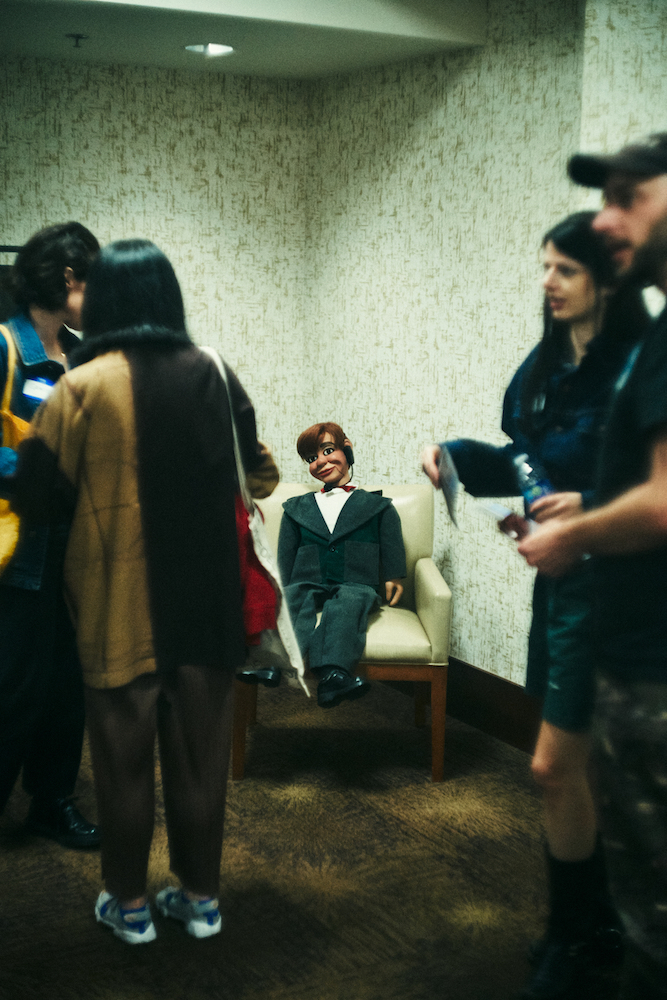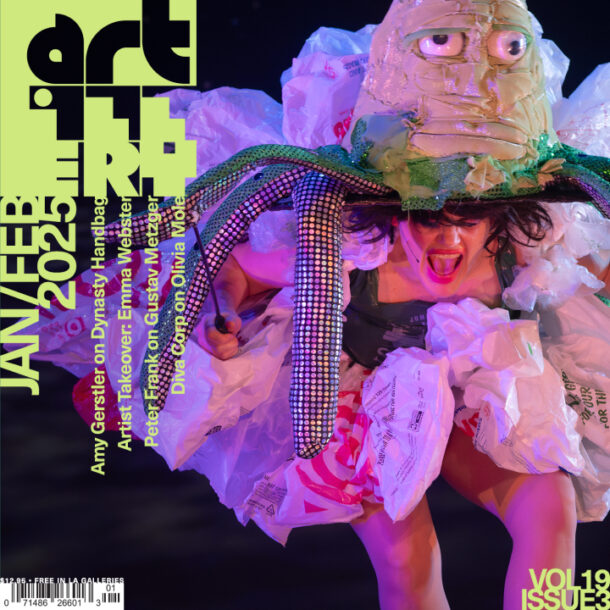The central question of all ventriloquism is: Who is in charge? We know the puppet is not alive, but a good ventriloquist can move the puppet’s body so naturally and throw their voice so convincingly as to make the audience doubt their first instinct. However, the mechanics of ventriloquism require that the ventriloquist and the puppet remain in close quarters—too close for the puppet to ever appear independent of its puppet master. The effect is often comedic, even as it remains discomforting. Perhaps this explains why so many ventriloquism acts include some variation of the puppet demanding that the ventriloquist get their “hand out of my ass.” These jokes let the audience know that everyone is in on the joke. Even the puppet knows it’s just a puppet.
It is a testament to actor Sophie Becker’s ventriloquism, writer Henry Gunderson’s script, and—yes—puppet Jerry Mahoney’s charm that The Jerry Mahoney Success Seminar both asks and reframes this question. The requisite acknowledgment of ventriloquism’s artifice is the core of the performance. As the show opened, Becker introduced us to her puppet/boss, explained his backstory and how the two came to be acquainted. Jerry then begins the seminar. He explained that the key to success in Hollywood is to clear one’s mind of everything, to become, in other words, a dummy. At Jerry’s prompting, the audience responded in unison: “I am the dumbest version of myself.” After this call and response, Becker cued up a video montage, though not before Jerry chided her for not moving fast enough. The montage was primarily composed of corporate inspirational images; however, it quickly began to glitch out, soaring alpine vistas degrading into pixelated blocks, at which point Jerry demanded that it be turned off. Becker then broke into a rendition of “I Believe in You” by Kylie Minogue, which, via Jerry, she impressively dueted alone. With the room silent after this musical performance, Jerry concluded the seminar by encouraging the audience to leave the room dumber than when they arrived.
Before going further, it is worth giving some backstory. Paul Winchell was an early television personality, comedian, and early inventor of an artificial heart (there is certainly much more to say at another time on the connection between ventriloquism and artificial hearts) who created the Jerry Mahoney puppet in the 1940s. For the next three decades, the pair regularly appeared on TV together, including as hosts of the Paul Winchell and Jerry Mahoney Show (1950–1956) and Winchell-Mahoney Time (1965–1968). For the following forty-odd years, Jerry remained largely locked away, a victim of ventriloquism’s declining popularity. As Artillery reported last year, Becker brought Jerry out of retirement in 2024. Taking advantage of a resurgent interest in ventriloquism, Becker began performing in New York with the Jerry Mahoney doll. The Success Seminar grew out of these performances, simultaneously expanding on and profiting from Jerry’s old-Hollywood stories.

The Jerry Mahoney Success Seminar. Photo: Roman Koval.
In the production, Becker plays the puppet’s doting assistant, desperate for Mahoney’s approval even as she is the one operating the character. Mahoney is grateful to Becker for bringing him back to life, even as he admonishes her over little details like not changing the presentation slides (which instruct the viewer how to succeed as an actor) quickly enough. Becker’s eagerness to impress comes from her full belief in Mahoney’s advice to young actors: be a dummy. In proper success seminar style, the audience is then asked to respond in unison: “I am the dumbest version of myself.” This mantra in effect flips the conceit of ventriloquism on its head. The puppet does not have to become more lifelike; the audience becomes more puppet-like. This reversal is further emphasized by Becker’s performance. As the ventriloquist, she controls the performance, as even Mahoney explicitly recognizes, but her performance as an overeager assistant inverts this. Jerry Mahoney does not deny his puppet-ness. Instead, he appears more alive precisely because he is so clear about being a puppet. Much of the delight of the performance is in how this framing, which emphasizes the craft of ventriloquism itself, feeds back into the “purpose” of the seminar as show business advice.
The audience also engages with Jerry’s advice. We are not simply passive viewers of a performance but active participants in the seminar. As we affirm him as a puppet, we are asked to take this puppet-ness as the key to success in Hollywood. In other words, the performance creates a feedback loop. Who is in control? One could cynically suggest Becker’s ventriloquism is clearly primary, but that is not so clearly the case. The performance only works so long as Jerry leads it; Becker needs the puppet as much as he needs her.
This collapsing loop was further played up by the seminar’s location at the Bonaventure Hotel. While the same performance at a gallery or theater would have been enjoyable, at the Bonaventure—a building as closely identified with the vertiginous postmodernism of the 1980s as any—it was transformative. Becker’s brown business suit was perfectly complemented by the hotel’s brown and gold carpeting. Mahoney’s recollections of a bygone Hollywood felt at home in the fading eighties splendor of the Bonaventure. In the hotel, one could not rely on the context supplied by an arts space to pin the performance down as simply that. At the Bonaventure, the seminar was just another business conference, albeit an odd one, among many occurring that day.
It is difficult when discussing the Bonaventure not to mention, at least in passing, Fredric Jameson’s study of it. Jameson posits that the Bonaventure is disorienting “total space.” Its place in the fabric of downtown Los Angeles is so incongruous and its interior so incomprehensible as to exceed our sensemaking abilities. This is, as Jameson goes on to argue, what makes the Bonaventure such a potent symbol of postmodernism. The Jerry Mahoney Success Seminar masterfully tapped into this framework. Instead of getting bogged down in the chicken or egg debate of Becker and Mahoney’s relationship, the seminar proposes treating all parties as equals of a postmodern sort. Mahoney’s puppet-ness is not something to be occluded or transcended in the name of appearing more human, but rather a given to experiment with, something Becker and Gunderson did with great success.


